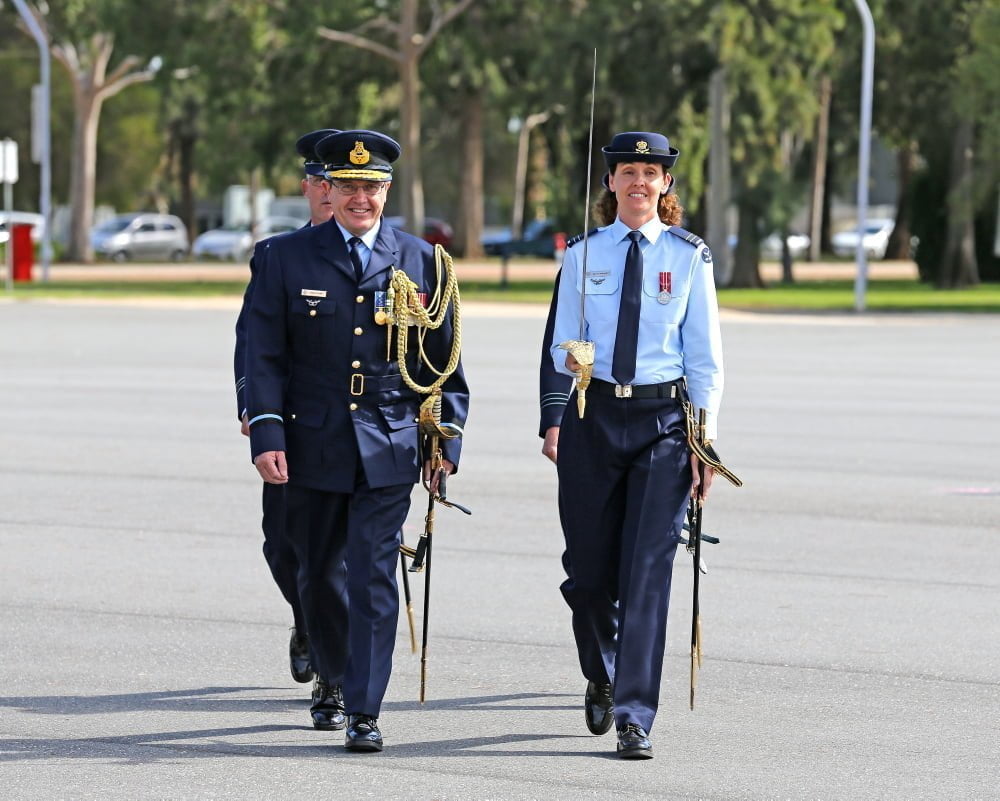2016-09-04 By Robbin Laird
Prior to the Williams Foundation seminar on air-sea integration, I had a chance to sit down with Air Commodore Kitcher and to discuss the way ahead for the RAAF in the joint combat space.
He is the Director General of Capability Planning in the RAAF.
Air Commodore Kitcher provided an understanding of how the RAAF was integrating its new platforms into the force, and how opening the aperture from the outset on joint capability was affecting that roll out as well.
Question: It is often noted in the USAF that 80% of the platforms which will make up the 2025 force are already here.
What is the RAAF’s perspective?
Air Commodore Kitcher: “It is somewhat different from the USAF. And our challenge is also somewhat different. By 2025 our oldest platform will be a C130J, which remains the most modern C130 available.
“In 2025, we’re not going to be operating a platform in the air combat space that’s 20 years old. In Australia, we don’t have to integrate an F35 with an F16, or an F35 with the classic Hornet.
“We will be operating some of the latest and most capable platforms across the air lift, control of the air, strike and ISR roles and our challenge is to get best combat value out of an integrated Australian and coalition force using these cutting edge capabilities.
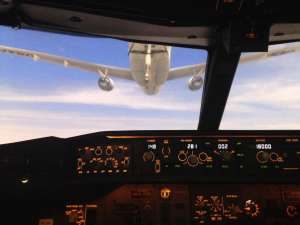
“We’ll retire classic Hornet, and introduce the F35-A which is much more than a replacement for the Classic. Our other air combat asset are our Super Hornets, which are only 5 years old, and both will be supported (amongst many other things) by Growlers, which will arrive in Australia next year.
“If we look at the maritime space, P3s are retiring, P8s and Triton are being introduced. Our first P8 turns up in November this year. If we look in the airlift space, C130Js will be our oldest platform, but they remain contemporary.
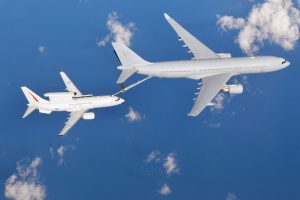
“The KC-30 Multi Role Tanker Transport is 4 or 5 years old with both the hose and drogue and boom air to air refueling capabilities being fully realised and another 2 effectively new KC-30 aircraft will arrive before the end of 2019. We also picked up C-17 aircraft #7 and 8 last year. C-27J is being introduced right now and we expect it to reach IOC before the end of this year.
“In the surveillance and control area , the E-7 Wedgetail AEWAC airframe might be 10 or 15 years old. However, the Wedgetail capability is equal to or better than any similar capability in the world.
“You’d have to say Wedgetail is a cutting edge AEWAC capability. There would be some capabilities that Wedgetail has that the new USAF Block 40/45 E-3G AWACS doesn’t have, and vice versa, of course.”
Question: So your challenge is ensuring that your force which is a young force in terms of new capabilities can work effectively together; and for this, you are also working with core allies such as the US, but need to shape a core Australian way ahead.
How would you describe the challenge?
Air Commodore Kitcher: “How do I make my US Air Force ‘like’ F35A work closely with my US Navy ‘like’ Growler and Super Hornet to achieve a mission?
“Similarly, how do I ensure these aircraft, plus the Australian bespoke Wedgetail can work effectrvely with the RAN LHD and Air Warfare Destroyer to achieve a Maritime support or strike mission?
“It’s a good problem to have to ensure that we get the maximum collective capability out of our individual platforms in the Australian context, which means we’ve got to make them work with each other.
“Larger forces, like the US, may not have that same requirement, because they’ve got other assets that can do various specialized missions.
“And we face a major challenge to ensure that our new air platforms work in an integrated manner with evolving Navy and Army capabilities.
“We must shape solutions which support our Australian Concept of Operations.
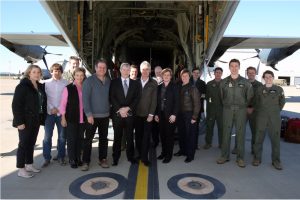
“Our force also obviously needs to be “integratable” and/or interoperable with the US and other allies, but we won’t get there fully by simply buying US C2 and ISR systems.
“Not only do we need to make a particular platform or system work for Australia within our ADF capability context, but we need to ensure that it’s truly interoperable in a coalition as well.
“This is a real challenge, because there are security issues, restictions and requirements that exist that musr be overcome to realize true high-level interoperability.
“However, solving these problems is far better than trying to keep something that’s 30-year-old flying and make it work with the new equipment coming on line.
“To solve these challenges, we are focused on prioritising and integrating only the things that you ‘should’ to make a more lethal and effective force.
“There is no need for all our capabilities to be fully connected to each other, there are levels of connectivity that will suffice. especially initially We must prioritise and identify what we ‘should’ do, and to what level, vice embark on a program of doing what we ‘can’ do.
“A component of the RAAF Project Jericho involves this kind of thinking and is looking at our Air, Maritime and land capabilities, determining the art of the possible with respect to connectivity, and then suggesting levels and priorities that should be pursued.
“This also includes components in the virtual and constructive areas such that we can also train more effectively in the joint arena.
“Improving our training capacity by complementing live training with virtual and constructive is vital, especially where availability of the scarce live resources necessary to generate a complex training scenario are limited, and security restrictions could inhibit operating live at appropriate levels.”
Question: You have done a lot of worked to shape a fifth-generation enabled force, prior to the F-35 showing up.
How will the F-35 fit into that evolving effort?
Air Commodore Kitcher: “The F35 introduction’s is catalyst for significant change.
“Although the jets don’t arrive in Australia until the end of 2018, and IOC is not until the end of 2020, believe me, we are right in the middle of introducing the F-35A into service.
“In addition to personnel we have embedded in the overall F-35 program in the US, we have two RAAF aircraft and four instructors at Luke AFB. Our first cadre of dedicated F-35 maintainers and engineers departs for the US in Jan 17, and will be gaining the necessary experience so we can operate the F-35 in Australia from the end of 2018.
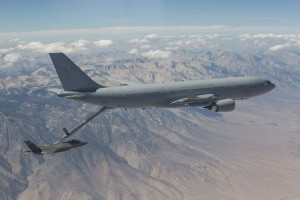
“Operating the F-35 will be one thing, but we also need to be able to sustain it, and the methods of sustaining the F-35 are also different to older platforms.
“We have been planning for a while now, and these plans will continue to evolve, but I’m not sure our system fully understands that this significant transition is well and truly underway.
“You can keep flying legacy aircraft forever if you want to spend enough money on them, but they all reach a point where they will become capability irrelevant.
“Our Classsic Hornets are doing a great job in the Middle East right now, and due to the raft of Hornet upgrades we have completed, remain amongst the most capable Classic Hornets anywhere.
“However, they will reach a point in the near future, especially in the higher end fight, where their utility will be significantly diminished.
“The F-35 brings 5th generation qualities which will allow for a significant expansion across a raft of ADF capabilities. Air Maritime, Land and most importantly joint.
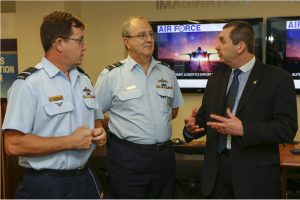
“We’ve chosen, and we have structured it such that the Classic Hornet will run out of effective hours and fatigue life at the point not too far after when the F35 is being introduced. There is contingency of course but not a lot. We don’t have the luxury simply to reflect abstractly on this problem anymore, we’re in the middle of solving it.
“That gives us a very aggressive F35 introduction schedule.
“For example, we’re planning to change out a classic Hornet to F35 squadron over 12 months. A squadron will stop flying the classic Hornet at the end of December one year, and by the end of December next year they are fully up and running and operational on the F-35. That is a very tight schedule. We’ve got a plan to execute but as you would expect, it’s not without risk.
“However, being a little bit smaller than what other forces might be, we tend to also be more agile.
“And that agility will see us deal with any risks that might materialize, or the other inevitable pop up issues.
“Due to this aggressive schedule, our ability right now to deal with many other things triggered by the F-35 is somewhat limited, we are rightly focused on introduction.
“Fortunately, most of these associated issues, such as the Mission Data Environment, have already been the subject of extensive work. We have been positioning our joint force to both provide the necessary level and type of data to maximize new capabilities such as Growler, Triton and F-35A, and process the vast amounts of data these capabilities will collect.
“There are definitely remaining challenges in this space, we’ve observed them here in Australia and also with our key coalition partners, but there is good work underway in parallel with the platform introductions.
“I’m sure after we introduce the F-35 aircraft we’ll still have a lot of work to do to get us to the point where we maximize the F35 capability across the Australian defense force, and interoperability with the other F-35 forces, but this is natural and will be dealt with in due course.
“There is certainly a lot happening at once.”
Question: But clearly, you are bringing in the F-35 with the mindset that it is not simply replacing the Hornet?
Air Commodore Kitcher: “I absolutely agree we are not just replacing the classic Hornet with another fighter.
“And we are looking from the ground up at complementary F-35 capabilities to maximize the F-35 effect across the joint space, such as the missiles we wish to see onboard our F-35.
“For example, we are looking at the Kongsberg JSM, we think that presents a logical option to consider far more seriously for our JSF maritime strike capability, and we’re looking at that right now, as was announced at the 2015 Avalon Air Show.
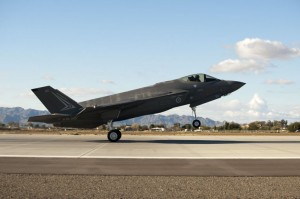
“Our requirement for a quality maritime strike missile internally carried on the F35 might also be ahead timewise of what the US and other coalition partners might have. It might also be ahead of what the US has programmed. We’re certainly working on the F-35 MARSTK capability and are also developing options, with Australian Industry, that might lead to a dual mode seeker in the JSM.
“But it is clear that just like in the case of Wedgetail and KC-30A, we want to put the F-35 into the hands of the warfighters as rapidly as possible.
“They will make it work.
“I know that despite all our best efforts and intent, we won’t be able to plan the F-35 introduction perfectly from Canberra. We are doing our best job to make sure we deliver the capability to the men and women in the field, as efficiently and positively as possible.
“When we throw the F-35 at them, they’re going to do all sorts of stuff with it that we will not have even thought of.
“I look forward to letting our smart young man and women, who have grown up in a different environment to those of us here in Canberra, get their hands on the F-35 and do some amazing things with it. I’m also quite looking forward to getting back out there myself, and see this first hand.
“Our job is to set up the program and set in motion the framework for that kind of tactical innovation to happen, to position them for success.
“We should not get in their way with excessive top down guidance and legacy thinking.”


